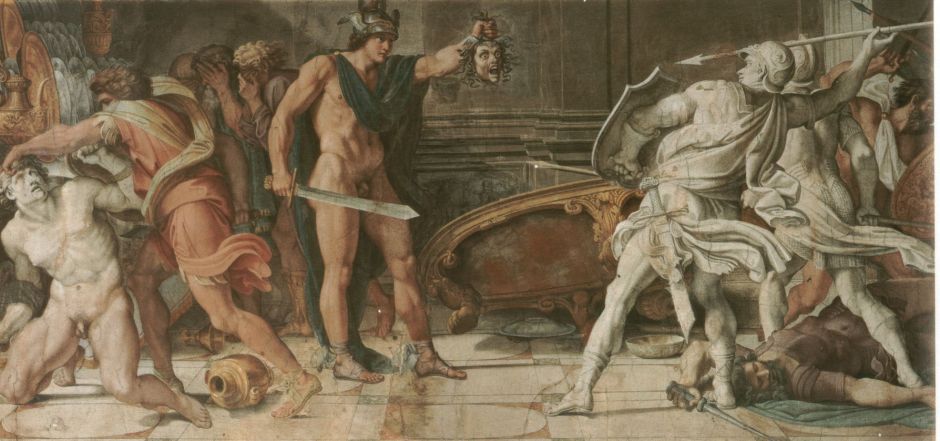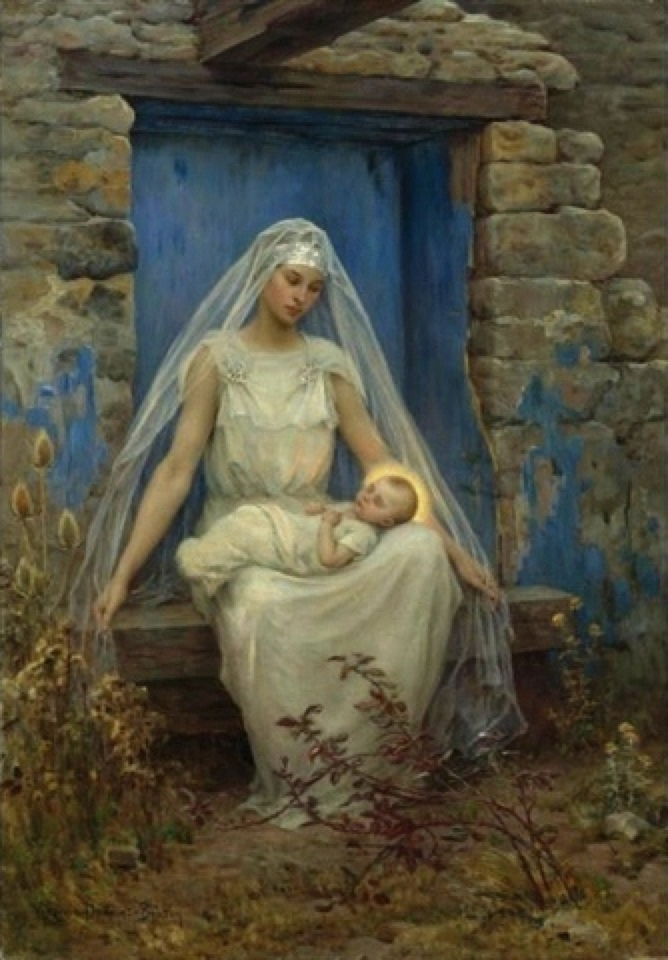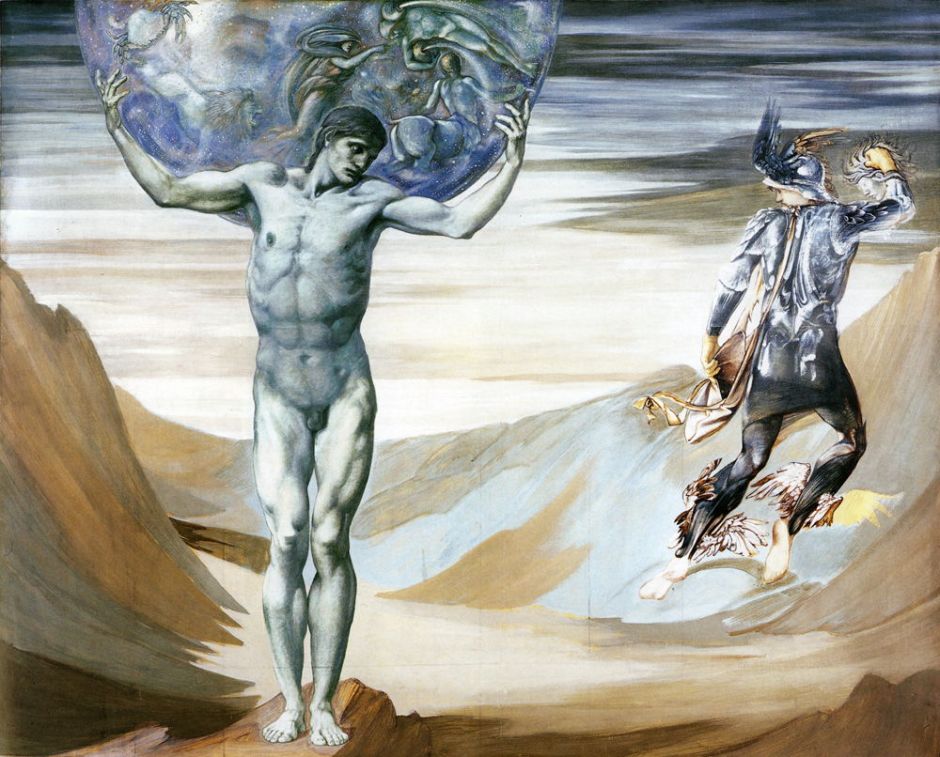Reading visual art: 168 Wedding, narrative
No matter what your background, religion or culture, there’s one universal cause for feasting and celebration, a wedding. One of the great challenges for the figurative painter, weddings are the central feature in three classical myths and one religious story examined in this article; tomorrow’s sequel looks at the depiction of less famous, personal weddings.
Of the three great mythical weddings, the first in chronological order was that of Hippodame and Pirithous, which brought an end to the dominance of centaurs on earth, the Centauromachy. This was celebrated in prominent places: the subsequent battle of the Lapiths and Centaurs was shown in sculpture on the temple of Zeus at Olympia, and on the Parthenon at Athens. It was Ovid, though, who chose to tell this story in the context of the Trojan War.
When Pirithous married Hippodame, the couple invited centaurs to the feast. Unfortunately, passions of the centaur Eurytus became inflamed by drink and lust for the bride, and he carried off Hippodame by her hair. The other centaurs followed suit by each seizing a woman of their choice, turning the wedding feast into utter chaos, like a city being sacked. Theseus castigated Eurytus and rescued the bride, so the centaur attacked him. Theseus responded by throwing a huge wine krater at Eurytus, killing him. The centaurs then started throwing goblets and crockery, and the battle escalated from there.

Piero di Cosimo’s The Fight between Lapiths and Centaurs (1500-15) is my favourite among the earlier paintings of the ultimate wedding feast gone wrong. In the centre foreground, Hylonome embraces and kisses the dying Cyllarus, a huge arrow-like spear resting underneath them. Immediately behind them, on the large carpets laid out for the wedding feast, centaurs are still abducting women. All around are scenes of pitched and bloody battles, with eyes being gouged out, and Lapiths and Centaurs wielding clubs and other weapons at one another. This is definitely a wedding to remember, if you survived it.

Towards the end of his life, Peter Paul Rubens painted The Rape of Hippodame (1636-38). At the right, Eurytus is trying to carry off Hippodame, the bride, with Theseus just about to rescue her from the centaur’s back. At the left, Lapiths are attacking with their weapons, and behind them another centaur is trying to abduct a woman.
The next wedding to be grateful you missed was that between the great hero Perseus and the princess whom he rescued from Cetus the sea monster. Andromeda’s parents were so delighted at their daughter’s rescue that she, who had already been promised in marriage to Phineus, was quickly married instead to Perseus. At the wedding feast, Phineus and his friends were understandably rather miffed, and a violent quarrel broke out between them and Perseus. As happens at the most memorable of weddings, this turned seriously nasty when weapons came out and bodies started to fall. The solution for Perseus was to brandish the head of Medusa and turn Phineus and his friends into cold statuary.

Annibale Carracci and Domenichino combined their talents in painting this fresco of Perseus and Phineas (1604-06) in the Palazzo Farnese in Rome. As Perseus stands in the centre brandishing the Gorgon’s face towards his attackers, Andromeda and her parents shelter behind, shielding their eyes for safety.

Surprisingly few paintings of this wedding make reference to the goddess Minerva’s protection of Perseus, which is clearly expressed in Jean-Marc Nattier’s undated painting of Perseus, Under the Protection of Minerva, Turns Phineus to Stone by Brandishing the Head of Medusa. The goddess, Perseus’ half-sister, is sat on a cloud to the right of and behind the hero. She wears her distinctive helmet, grips her spear, and her left hand holds the Aegis, providing narrative closure.
Perseus points his weapons away from himself and Minerva, and is looking up towards the goddess. In the foreground, one of Phineus’ party seems to be sorting through the silverware, perhaps intending to make off with it. The happy couple picked themselves up from the bodies, statues and debris, and moved on. Perseus gave thanks to Minerva for her support and the loan of her shield, by the votive offering of Medusa’s head, which Minerva had set into her shield, turning it into the Aegis.
The wedding of Thetis, sea nymph and spinster of this parish, and Peleus, king of Phthia and bachelor of that parish, was celebrated with a great feast on Mount Pelion attended by most of the gods. The happy couple were given many gifts by the gods, but one, Eris the goddess of discord, had not been invited. As an act of spite at her exclusion, she threw a golden apple ‘of discord’ into the middle of the goddesses, to be given as a reward to ‘the fairest’.

This is Jacob Jordaens’ The Golden Apple of Discord from 1633, based on a brilliant oil sketch by Rubens. The facially discordant Eris, seen in midair behind the deities, has just made her gift of the golden apple, which is at the centre of the grasping hands, above the table. At the left, Minerva (Pallas Athene) reaches forward for it. In front of her, Venus, her son Cupid at her knee, points to herself as the goddess most deserving of the apple. On the other side of the table, Juno reaches her hand out for it too. This sets up the Judgement of Paris, and the rest is legendary.

For once it’s the most modern version, painted by Edward Burne-Jones as The Feast of Peleus in 1872-81, that sticks most closely to the story. In a composition based on classical representations of the Last Supper, he brings Eris in at the far right, her golden apple still concealed. Every head has turned towards her, apart from that of the centaur behind her right wing. Even the three Fates, in the left foreground, have paused momentarily in their work.
This wedding banquet set up the beauty contest between Juno, Venus and Minerva in the Judgement of Paris. Venus won following her bribe promising Paris the most beautiful woman in the world, who happened at the time to be married to King Menelaus of Sparta. After Paris abducted Helen to Troy, the Greeks united to wage war against Troy, eventually capturing and destroying the city.

In 1562, Paolo Veronese was commissioned to paint a large work for the refectory of the Benedictine Monastery of San Giorgio Maggiore in Venice. Its central narrative is an episode of the ministry of Christ as recorded in the gospels: Christ and his disciples were invited to a wedding feast in Cana, Galilee. Towards its end, the wine started to run out, and he was asked what they should do. He directed servants to fill jugs with water, which he then miraculously turned into wine.
This huge canvas shows Christ, distinguished by his halo, at the centre of his disciples, with the Virgin Mary (also with halo) at his right, and sundry disciples arrayed along that side of the tables. The wedding group is at the far left of the party.

At the far right of the canvas, wine is shown being poured from a large container, a clear cue to the gospel narrative.

There’s also a great deal of other activity in every part of the painting. On the balcony behind Christ there are scenes of the butchery of meat, which is generally claimed to be lamb and symbolic of Christ’s future death as a sacrifice for mankind, as the ‘Lamb of God’, although there are no visual clues to support that interpretation. In the musicians below, and other guests, it is claimed that there are portraits of artists, including Veronese himself, and Titian. Other important figures who are supposed to be shown include Eleanor of Austria, Francis I of France, Mary I of England, Suleiman the Magnificent, and Emperor Charles V.
Finally, I turn to one of many weddings in more modern European literature.

The eighth story told on the fifth day of Boccaccio’s Decameron concerns the misfortunes of one Nastagio Degli Onesti, involving one ghost killing and dismembering the ghost of a woman, a strange and grisly tale told in a series of four panels by Botticelli. The fourth and last shows the hero Nastagio’s wedding, the bride and her women sitting to the left, and the men to the right, in formal symmetry. The groom is sat on the other side of the same table as the bride.




















